Design and Fabrication of a Novel Window-Type Convection Device
Abstract
:1. Introduction
2. Method and Numerical Computation
- The flow field is steady.
- The flow velocity of the centrifugal fan that propels the window-type convection device is negligibly low; thus, the flow field is assumed to be incompressible.
- Air is defined as a Newtonian fluid with constant density.
- The impact of gravity is neglected.
- The relative velocity between the solid surface and the fluid is zero, satisfying the no-slip condition.
- The roughness of the solid surface is neglected.
2.1. Development of an Analysis Model
2.2. Meshing and Boundary Condition Specifications
3. Discussion and Validation of Results
3.1. Effects of Airfoil Camber and Outlet Slit Size on Air Entrainment Performance
3.2. Effects of Airfoil Thickness and Outlet Slit Size on Air Entrainment Performance
3.3. Experimental Validation
4. Conclusions
Author Contributions
Funding
Institutional Review Board Statement
Informed Consent Statement
Data Availability Statement
Conflicts of Interest
References
- Taiwan Green Productivity Foundation. Energy Audit Annual Report for Non-Productive Industries 2015; Taiwan Green Productivity Foundation: Taipei, Taiwan, 2016; p. 19. [Google Scholar]
- Huang, T.Y.; Hocheng, H.; Chou, T.H.; Yang, W.H.; Ting, C.J.; Cheng, K.Y.; Hsieh, C.W. Design and fabrication of sunlight-redirecting and infrared-insulating microstructure. Energy Build. 2015, 90, 114–126. [Google Scholar] [CrossRef]
- Mason, R.; Pitt, R. Bladeless is more. Ansys Advant. 2010, 4, 5–7. [Google Scholar]
- Li, G.; Hu, Y.; Jin, Y.; Setoguchi, T.; Kim, H.D. Influence of Coanda surface curvature on performance of bladeless fan. J. Therm. Sci. 2014, 23, 422–431. [Google Scholar] [CrossRef]
- Flow Characteristics of the Dyson Air Multiplier. Available online: https://www.scribd.com/document/336690225/cfd (accessed on 28 November 2020).
- Studying Near-Surface Effects of the Dyson Air-Multiplier Airfoil. Available online: https://docplayer.net/22367125-Studying-near-surface-effects-of-the-dyson-air-multiplier-airfoil-team-12-michael-hua-1-dev-ashish-khaitan-2-paul-kintner-1.html (accessed on 28 November 2020).
- Barlow, C.; Lewis, D.; Prior, S.D.; Odedra, S.; Erbil, M.; Karamanoglu, M.; Collins, R. Investigating the use of the Coanda Effect to create novel unmanned aerial vehicles. In Proceedings of the International Conference of Manufacturing and Engineering Systems, Huwei, Taiwan, 17–19 December 2009; pp. 386–391. [Google Scholar]
- Huang, C.H.; Gau, C.W. An optimal design for axial-flow fan blade: Theoretical and experimental studies. J. Mech. Sci. Technol. 2012, 26, 427–436. [Google Scholar] [CrossRef]




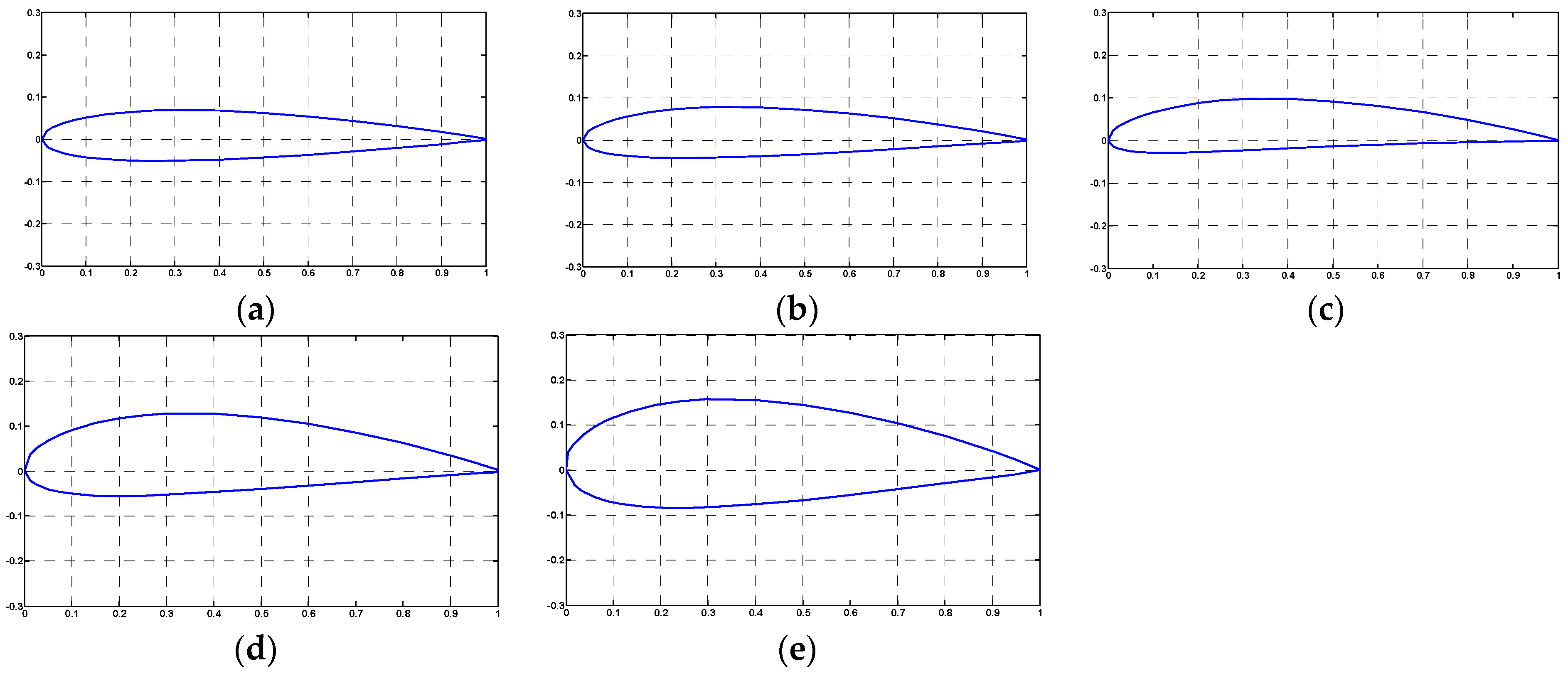
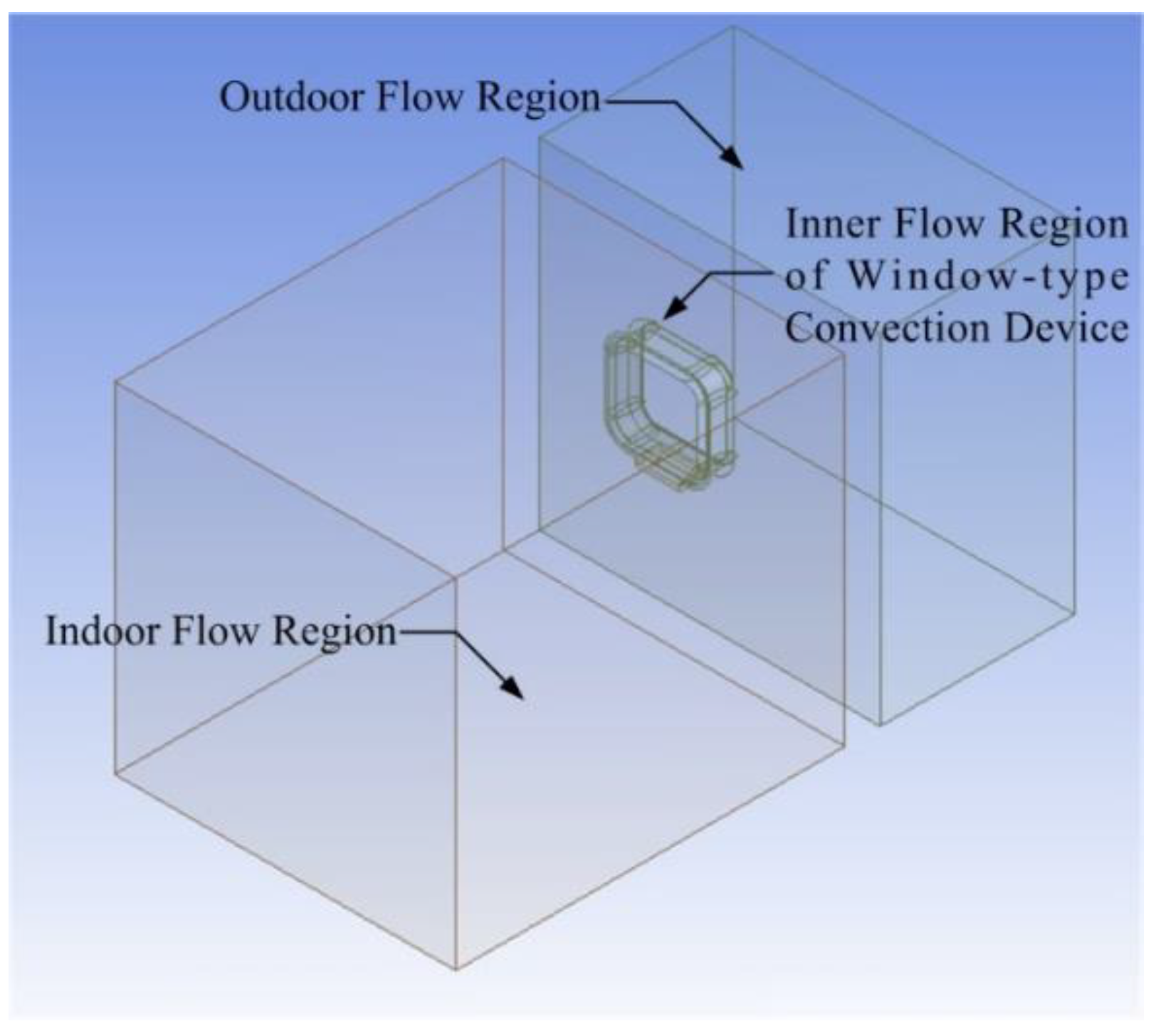
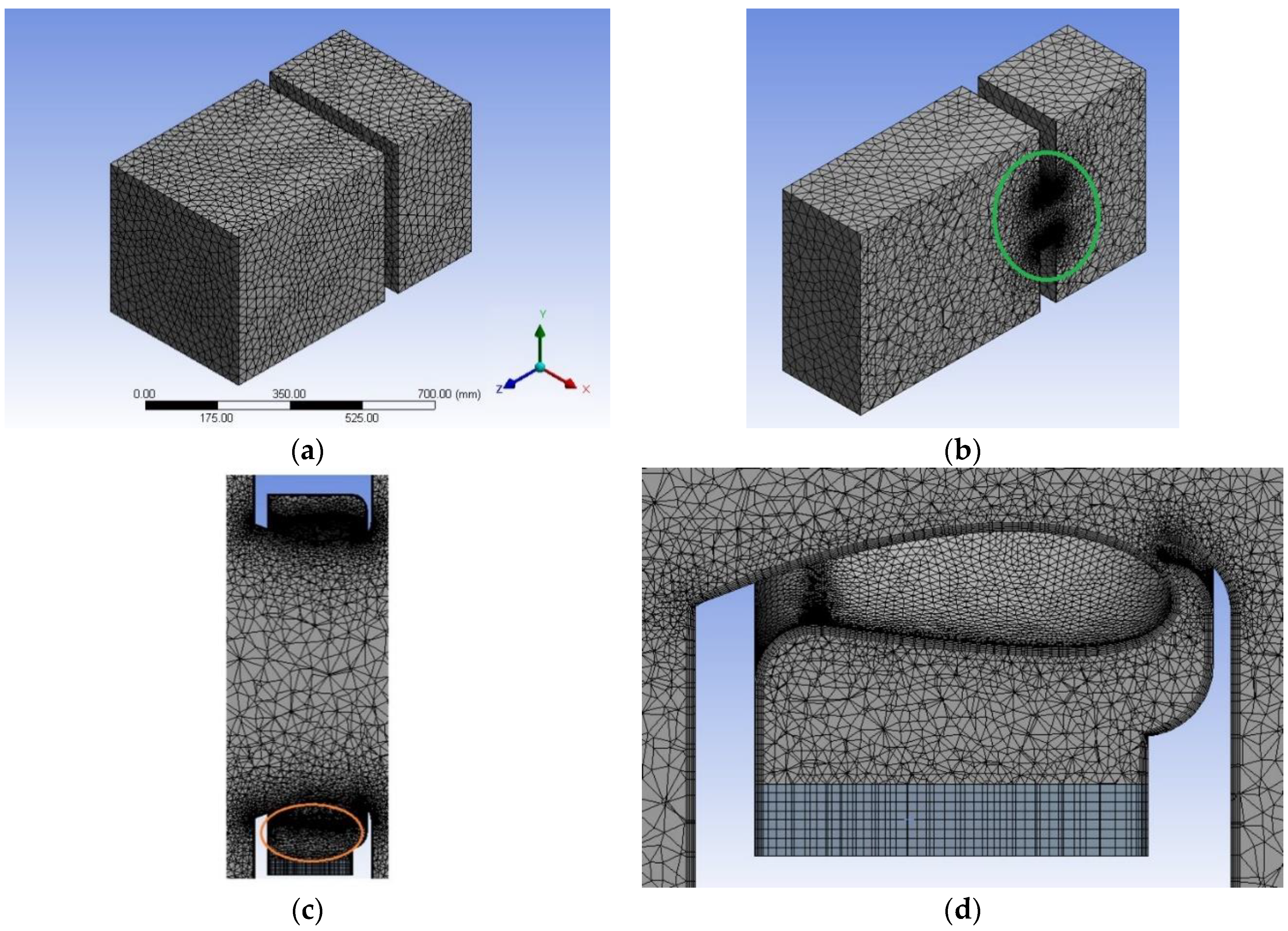

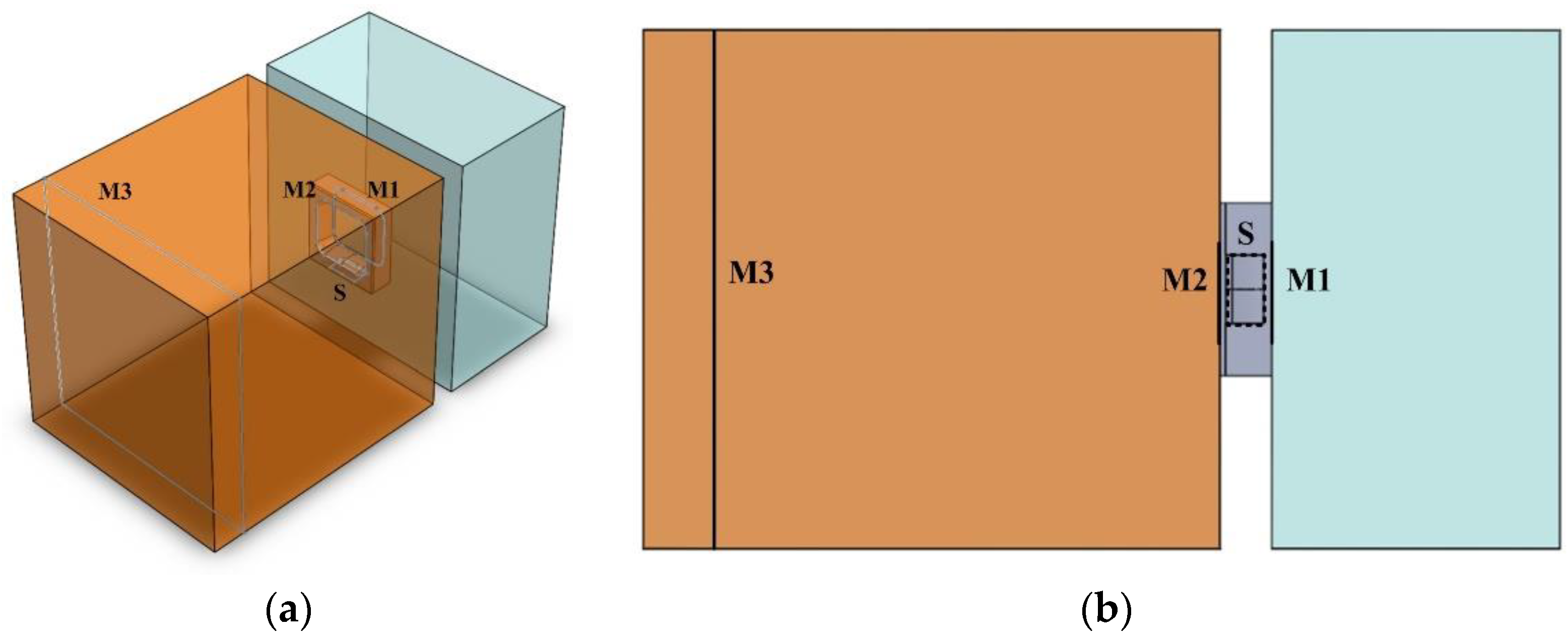
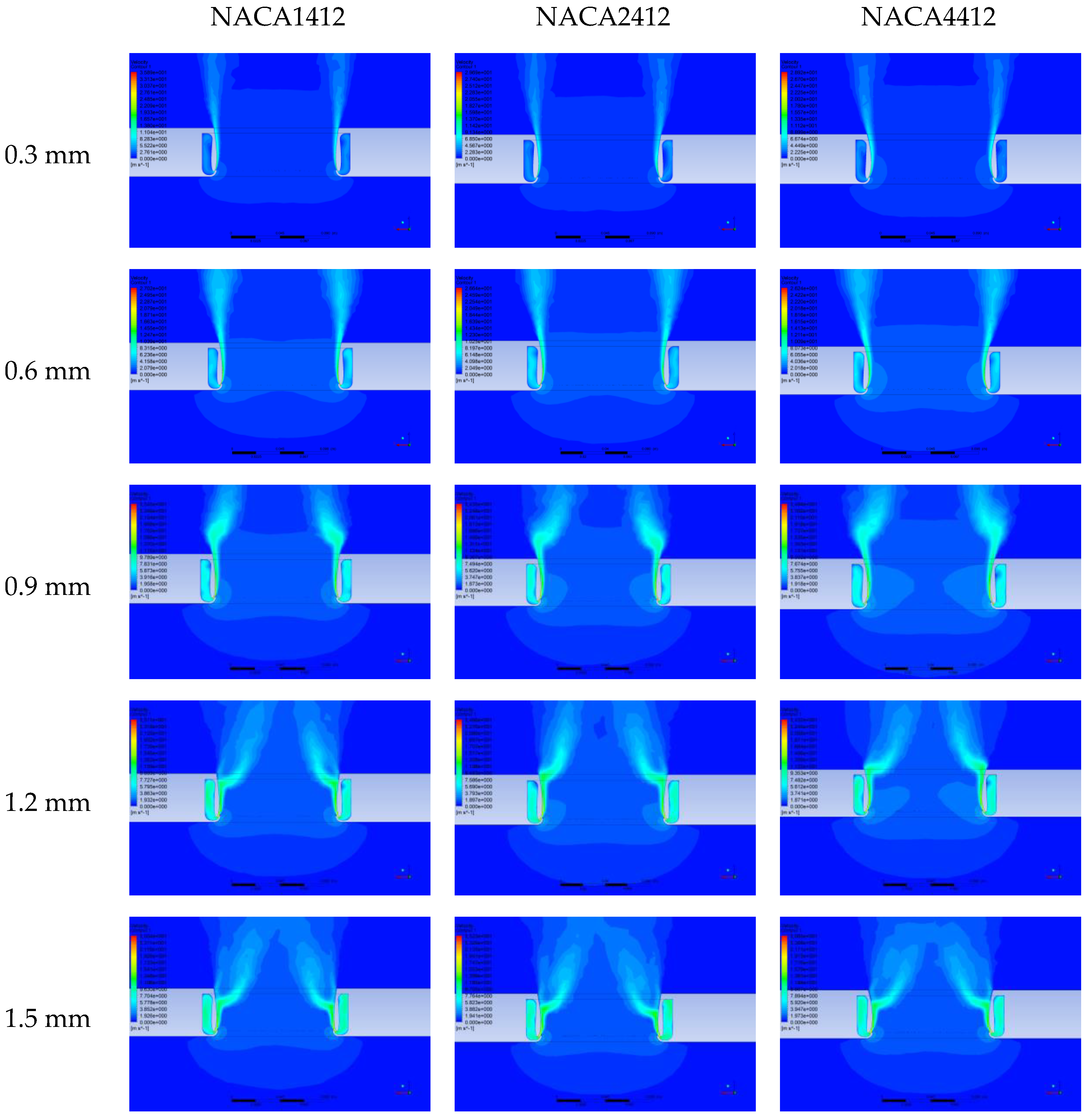
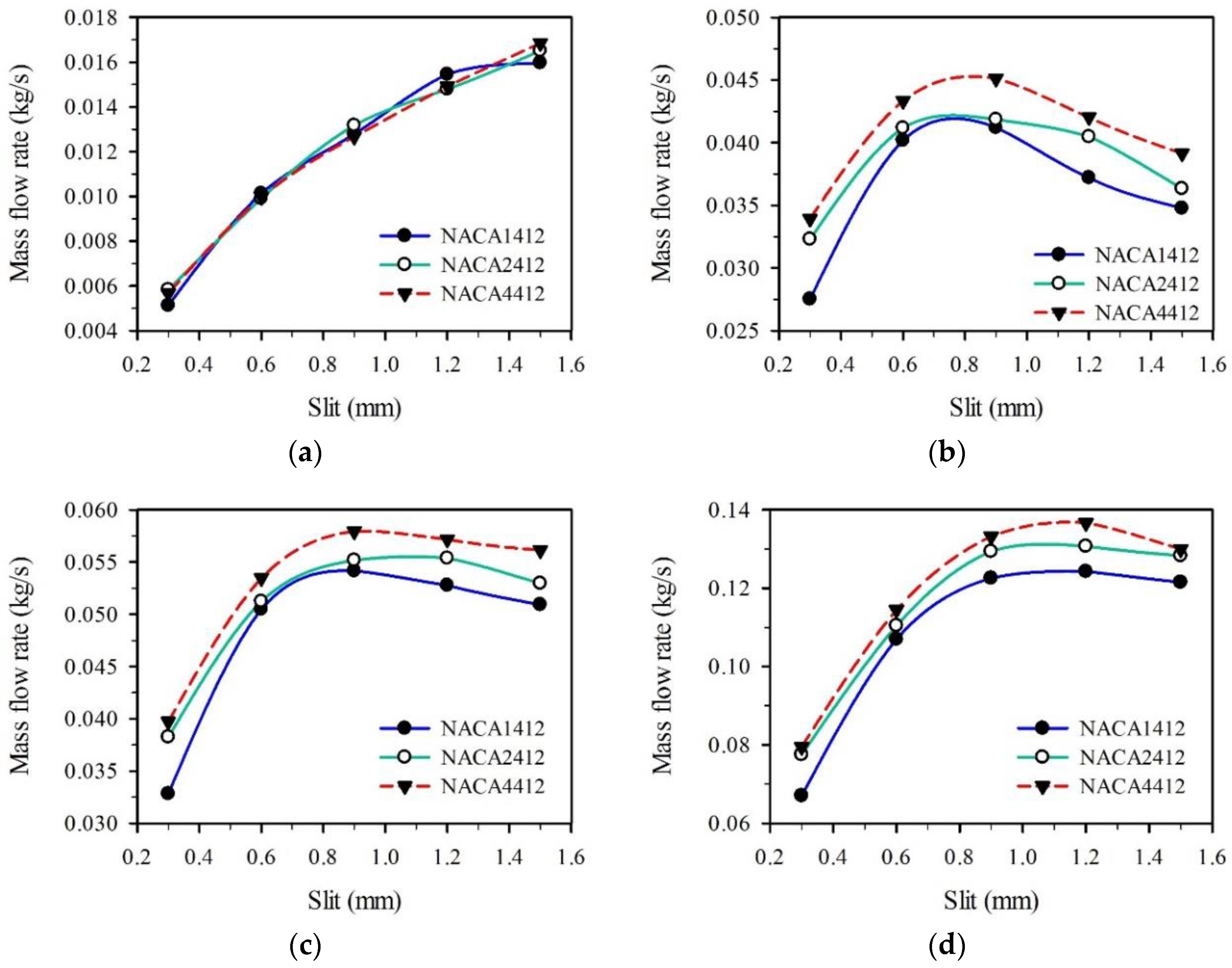



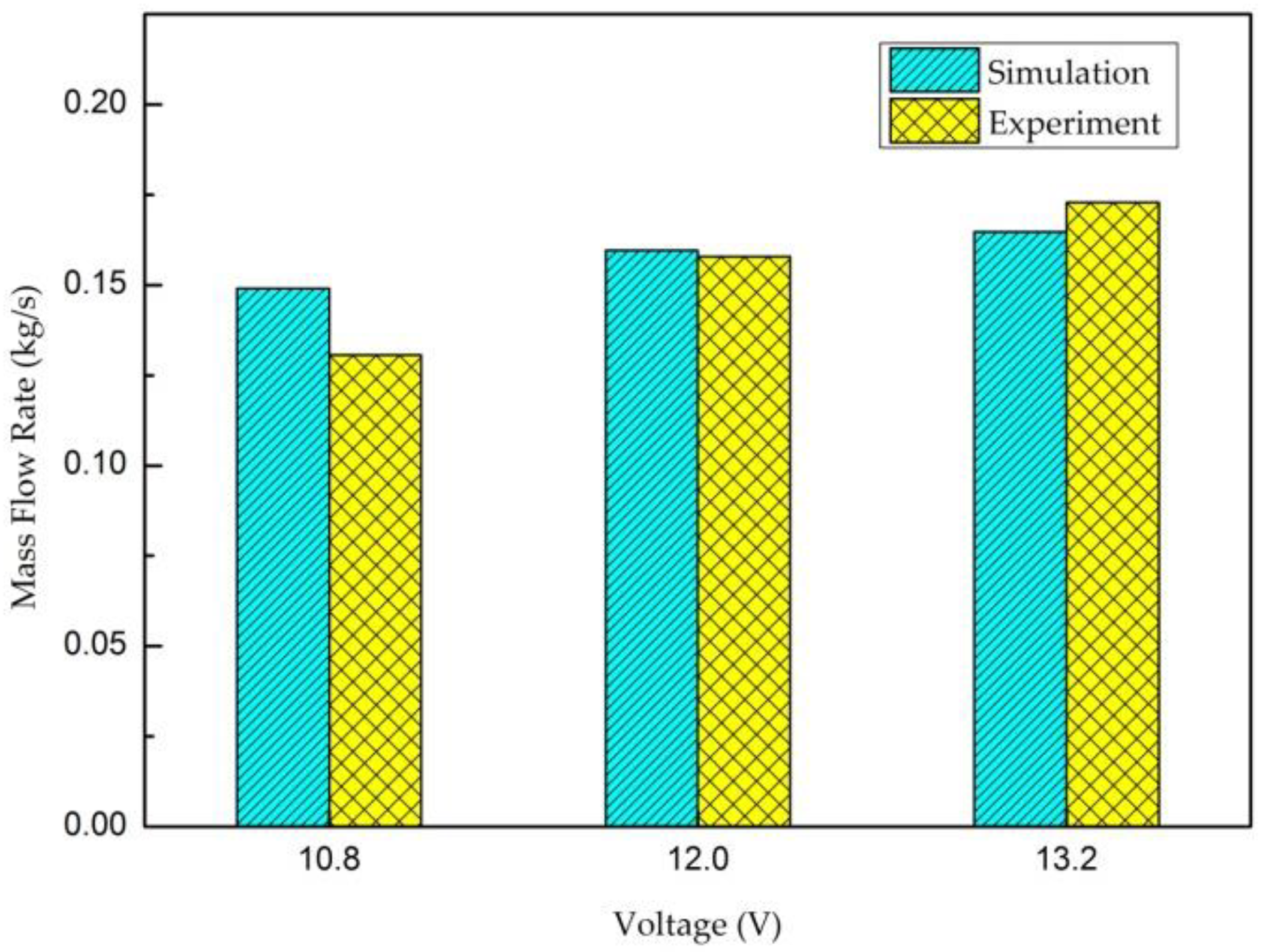
| Slit (mm) | NACA1412 | NACA2412 | NACA4412 | |||
|---|---|---|---|---|---|---|
| VM1 (m/s) | PM1 (Pa) | VM1 (m/s) | PM1 (Pa) | VM1 (m/s) | PM1 (Pa) | |
| 0.3 | 1.98 | −2.74 | 2.33 | −3.75 | 2.44 | −4.08 |
| 0.6 | 2.94 | −5.96 | 3.01 | −6.20 | 3.16 | −6.81 |
| 0.9 | 3.05 | −6.39 | 3.11 | −6.59 | 3.33 | −7.45 |
| 1.2 | 2.81 | −5.46 | 3.04 | −6.31 | 3.15 | −6.76 |
| 1.5 | 2.65 | −4.89 | 2.77 | −5.31 | 2.97 | −6.09 |
Publisher’s Note: MDPI stays neutral with regard to jurisdictional claims in published maps and institutional affiliations. |
© 2020 by the authors. Licensee MDPI, Basel, Switzerland. This article is an open access article distributed under the terms and conditions of the Creative Commons Attribution (CC BY) license (http://creativecommons.org/licenses/by/4.0/).
Share and Cite
Lin, H.-T.; Guu, Y.-H.; Hsu, W.-H. Design and Fabrication of a Novel Window-Type Convection Device. Appl. Sci. 2021, 11, 267. https://doi.org/10.3390/app11010267
Lin H-T, Guu Y-H, Hsu W-H. Design and Fabrication of a Novel Window-Type Convection Device. Applied Sciences. 2021; 11(1):267. https://doi.org/10.3390/app11010267
Chicago/Turabian StyleLin, Han-Tang, Yunn-Horng Guu, and Wei-Hsuan Hsu. 2021. "Design and Fabrication of a Novel Window-Type Convection Device" Applied Sciences 11, no. 1: 267. https://doi.org/10.3390/app11010267




